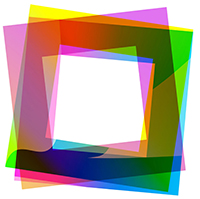This exhibition was intended to explore experimentation in photography since the 1970s. As is inevitably the case with any such endeavor, particularly one that covers its sprawling subject with only seventy-two works, it is easy to quibble with its inclusions and exclusions. To do so, however, would be to overlook the exhibition’s importance. It smartly investigated the flowering of formal and material experimentation after the advent of digital photography in the 1990s and tracked the dialogues between that field and painting and Conceptual art. Curated by Carol Squiers, the show comprised objects made between 1964 and 2013 by twenty-one different artists, all of whom use photography, but in very different ways. The entries ranged from overpainted photographs by Gerhard Richter made between 1986 and 2008, in which portraits, landscapes, and environments are partially obscured with squeegeed passages of multicolored oils or enamels, to “durational” photographic tableaux by Owen Kydd from 2011 and 2012: quiet still lifes and street photographs on video.
Smeared with semitransparent overlays of color, Richter’s playfully psychedelic contributions carry traces of his studio practice. A red and yellow tide threatens a bucolic European bridge; the Alps appear invaded by wrinkled flying orbs. Wry transformations of the touristic gaze, these works are surprising and often quite funny entries in the artist’s oeuvre. They show us mechanically mediated painterly gestures simultaneously obscuring and merging with the everyday world, and remind us that since the 1960s, photography has been central to the development of abstract painting, influencing the practices of, among other artists, Christopher Wool, Wade Guyton, and Tauba Auerbach.
If Richter weds painted abstractions to representational photography, younger artists such as Adam Fuss, Marco Breuer, and Alison Rossiter use cameraless photography to produce abstract imagery that nonetheless retains a purchase on the real. Fuss makes photograms—gelatin silver contact prints—of moving water lit by camera flashes. Simultaneously abstract and representational, they show how a split second of time, when frozen, can symbolize a hidden natural order. Like Fuss, Breuer makes photograms, but does so via more deliberate actions such as scratching, cutting, burning, or otherwise marking photosensitive paper. The resultant images, at once gestural and geometric, are indexes of these physical manipulations, documents of a particularly corporeal kind. Rossiter begins making her photographs by sourcing expired photographic papers on eBay, which she then wholly or partly develops, pouring or pooling the developing fluid onto these orphaned surfaces. Produced after the digital revolution, the works, which sometimes resemble atmospheric starscapes or landscapes and at other times spectral Barnett Newmans, have a melancholy air, suggesting a nostalgia for bygone analog photographic technologies.
Other artists, by contrast, embrace the possibilities of digital photography with glee. Among such artists here, Artie Vierkant is the most impressive. His “image objects” are abstract reliefs, layers of quasi-geometric color fields whose gradient-patterned chromatic transitions reveal their origins in Photoshop. Printed out on three-dimensional substrates, they are then photographed and digitally altered, their morphed documentation becoming another aspect of their evolving nature as art objects. Mixing photography with Conceptual tactics and the distributive possibilities of the Internet, Vierkant thereby evokes an ongoing cyclical practice, wherein the digital is given physical form only to be reabsorbed again into a new virtual configuration.
The exhibition also identified Sigmar Polke and Lucas Samaras as senior figures whose examples loom large over the present day. Like Richter, Polke used photography and mass-media appropriation to revitalize German painting in the 1960s while pursuing an extremely creative photographic practice that embraced chance, error, and the incorporation of media such as painting and drawing. During the early to mid-1970s, Samaras, for his part, deployed incisive strategies of staged self-portraiture to experiment with representations of his own body. The trippy results—in which the artist’s etiolated flesh is blurred, distended, and otherwise warped—established a trajectory of experimentation with self-portraiture evident in the work of Cindy Sherman and Yasumasa Morimura in the 1970s and ’80s and in that of younger artists such as Laurel Nakadate and Jaimie Warren today. Photography, the exhibition suggested, has never been a single medium, and the digital revolution has simply made it more multiple, heterogeneous, and interrelated, conscious of its own history as well as those of other media.
More information available at: http://artforum.com/inprint/issue=201406&id=46961

